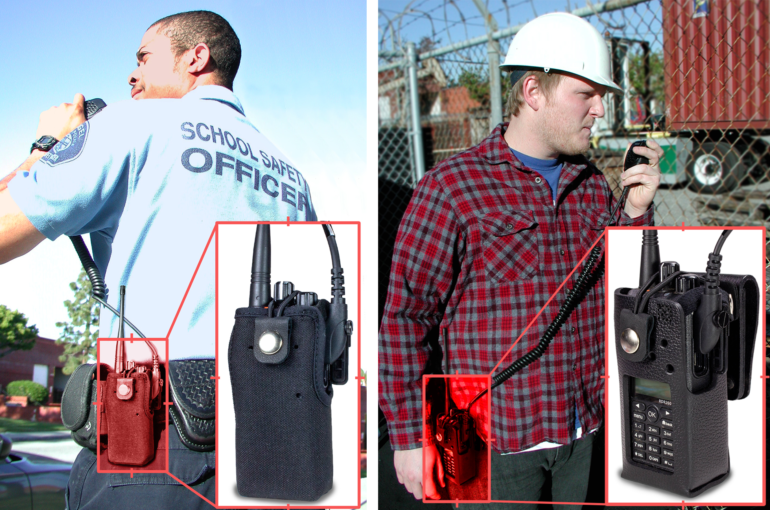
What Are the 4 Best Ways to Protect Your 2-Way Radios?
We talk a lot about the importance of having two-way radios on hand to protect you and your teammates — but what about the best ways to protect your two-way radios themselves? It won’t matter how good their audio, coverage, and performance are if they’re easily broken. So, without further ado, here are DTWR’s top four ways to keep your two-ways safe and secure — always.
1. Premium-Quality Holsters
Have other dealers ever emphasized how important holsters are to protect your two-way radios? No? Chances are, they didn’t because they want you to continue needing radio repair and replacement. That means better sales for them.
At DTWR, we want two things for you: to love the radios you have, and to get the longest possible use out of them. We know that if you trust our product, you’ll trust us for your next order.
That’s why we always tell our customers to invest in premium-quality holsters. These aren’t run-of-the-mill options, either. Think of them as the Cadillac of holsters: so durable that your radios will work like new even five years down the line.
2. Don’t Leave Radios “On” While Charging
It’s very easy to treat a two-way radio like a cellphone and just plug it back up when it’s still turned on. The problem is that this quickly degrades the battery. Why? Because it’s forcing it to continuously charge, think it’s fully charged, then instantly start charging again for a non-stop cycle, until you either disconnect it from the base or finally switch the radio off.
Best-case scenario: you end up replacing your batteries a lot. Worst-case scenario: you cook the battery — and, by extension, the radio. Instead, protect your two-way radios by turning them off when you’re done using them.
Radio Pro Tip: Always let your batteries discharge completely before recharging them to avoid the memory effect.
3. Intrinsically Safe Models
We’ve talked before about why intrinsically safe two-way radios are critical for those who work in hazardous on-the-job conditions. You want units that won’t be affected by static electricity, dust, or water. But that safety also applies to the radios themselves. You can protect your two-way radio fleet by choosing models that:
- Meet requirements for each class of hazardous environment:
- Flammable vapors and gasses (Class 1).
- Flammable dust (Class 2).
- Flammable fibers (Class 3).
- Offer clear sound quality.
- Include a good warranty policy.
RCA’s RDR4200 series offers models that perfectly reflect these requirements. Their military-grade design also means they can take a beating and still work like nothing happened. That’s why they’re popular with construction companies and water treatment facilities.
4. Compact Base Stations
For those who work more behind a desk than on the go, one of the most cost-effective radio solutions is a compact base station. RCA’s RDR2750 is a game changer in this regard, and for several reasons. First, it’s much smaller than traditional base stations, making it convenient to position on any desk without getting in the way. Second, it’s easy to secure, which keeps it from being knocked over or stolen. Third, it maintains the same coverage as a handheld unit.
Best of all, it offers a whopping five watts of power, which is higher than any comparable unit on the market. When you factor in how it’s also cheaper than other brands, it’s clear why this stationary radio has already become a major hit with our customers.
Your Next Radio Purchase
We hope you’ll keep these reasons in mind to extend the life of your fleet. If you have questions about how to protect your two-way radios, or you’d like to talk about which ones we currently have in our inventory, don’t hesitate to call us at 888.299.6340. You’ll be glad you did.





No Comments